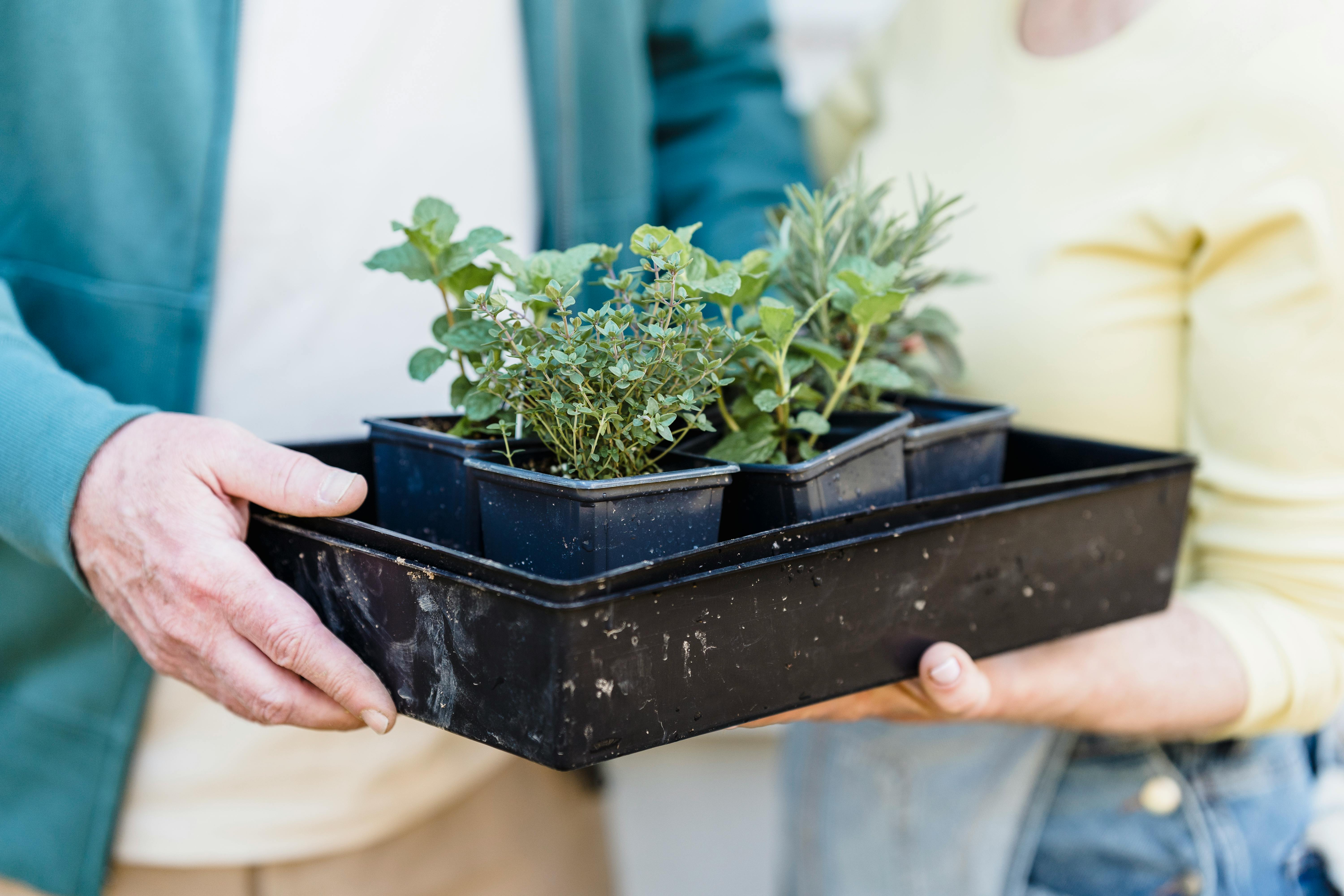Bluebonnets are a familiar sight to Texans, often dotting the sides of highways and landscapes in the springtime. But what many people don’t know is that they can also be planted in the spring. This article will explore how to plant bluebonnets in the spring, as well as discuss different varieties and tips for success.Bluebonnets are a type of wildflower native to Texas and are the state flower of Texas. They are a deep blue-violet color and have distinctive white tips which give them their name. Bluebonnets typically bloom in the spring, beginning in March and lasting through May.
What is the Best Time to Plant Bluebonnets?
The best time to plant bluebonnets is during the late fall or early winter when the weather is cool and mild. Bluebonnets thrive in mild temperatures, so planting them in early winter or late fall will give them time to grow and establish themselves before the summer heat arrives. Planting in late October or early November is ideal for most areas, as this gives the plants time to take root before any cold weather arrives. It also allows them to get a head start on blooming in early spring.
Bluebonnets need full sun and well-drained soil, so be sure to prepare your soil and place your plants in an area that receives at least six hours of direct sunlight each day. When planting bluebonnets, it’s important to space them 12-18 inches apart, as they will spread out over time. After planting, water your bluebonnets thoroughly and then water them once a week for the first few weeks until they are established.
Once your bluebonnets are established, you can reduce watering to once every two weeks or so during the summer months. Be sure not to overwater your plants as this can lead to root rot and other issues. As bluebonnets are native plants, they don’t require much fertilization; however, you can add a slow-release fertilizer at the beginning of spring if desired.
Taking care of your bluebonnets is relatively easy; just be sure to provide them with plenty of sunshine and light watering throughout the growing season and they should bloom beautifully in spring!
Ideal Conditions for Bluebonnets
Bluebonnets, the state flower of Texas, thrive in sunny, dry climates and well-drained soils. These beautiful flowers require plenty of sunlight and moderate temperatures to grow and bloom. They can survive in a variety of soil types but prefer a sandy loam texture. They also need plenty of water during the growing season but are drought tolerant once established. To get the most out of your bluebonnet planting, you should choose an area with good drainage and fertile soil that receives at least six hours of direct sunlight each day.
Bluebonnets are typically planted in late winter or early spring when there is still some moisture in the soil from recent rains or snowmelt. In areas with hot summers, it’s best to plant them in fall so they will have time to put down their roots before the heat sets in. If you live in an area where it gets cold during the winter months, wait until early spring to plant your bluebonnets so they won’t be exposed to extreme temperatures while they are establishing themselves.
Preparing Soil for Planting Bluebonnets
Bluebonnets are a beautiful sight in the springtime. These beloved Texas wildflowers are easily grown and require minimal care to thrive. To ensure successful planting and growth, it is important to properly prepare the soil before planting bluebonnets.
The first step in preparing soil for bluebonnets is to loosen and aerate the soil. Digging down at least six inches helps mix in organic matter such as compost or aged manure, which will help create a nutrient-rich environment for your flowers. Till the soil until it is loose and free of clumps, then rake it to even out any bumps or lumps.
Next, test the soil’s pH level with a home test kit. Bluebonnets prefer slightly acidic soils with a pH level between 6.0 and 7.5; if your soil’s pH level is higher than 8.0, consider adding sulfur or iron sulfate to lower it. Additionally, adding fertilizer can provide additional nutrients that help bluebonnets grow strong and healthy.
Finally, spread a two-inch layer of mulch over the topsoil to help retain moisture and reduce weed growth. Once you have prepared the soil according to these steps, you can begin planting your bluebonnets with confidence!
Are Fertilizers Necessary for Planting Bluebonnets?
Fertilizers play an important role in the growth and development of any plant, and bluebonnets are no exception. Bluebonnets are beautiful wildflowers, native to Texas, that bloom in the springtime. While bluebonnets don’t require large amounts of fertilizer to survive, applying the right fertilizer can help ensure healthy growth, promote blooming, and increase the number of flowers your plants produce.
The best time to fertilize bluebonnets is just before they start to bloom in March. A slow release fertilizer such as a 10-10-10 or 8-8-8 should be applied at a rate of about one pound per 100 square feet. This will provide the necessary nutrients for your plants throughout the growing season. If you’re growing bluebonnets in containers or pots, use a water-soluble fertilizer every two weeks during the growing season to ensure that your plants get enough nutrients.
It’s also important to remember that too much fertilizer can be harmful to bluebonnets and other flowering plants. Overfertilizing can lead to excessive foliage growth at the expense of flowering and can also lead to nutrient burn. When applying fertilizer, be sure not to exceed the recommended dosage on your product’s label and always water well after fertilizing.
In conclusion, fertilizers are not absolutely necessary for planting bluebonnets but they can help ensure healthy growth and promote blooming. When fertilizing, be sure not to exceed the recommended dosage on your product’s label and always water well after application.

Spacing and Placing the Seeds of Bluebonnets
Planting bluebonnets is a great way to add color to your garden or landscape. When done correctly, the blooms of these flowers will provide months of beauty and enjoyment. However, it is important to take the right steps when planting bluebonnets in order to ensure that they grow properly and remain healthy. Here are some tips for spacing and placing the seeds of bluebonnets:
The first step is to choose a location with good soil and ample sunlight. Bluebonnets need full sun in order to thrive, so make sure that you select an area with at least six hours of direct sunlight each day. Once you have chosen your location, it is important to prepare the soil properly before planting. Remove any weeds or debris from the area, then till the soil so that it is loose and free from clumps.
Next, it is time to space out your seedlings properly. Bluebonnets should be planted in groups of three or four plants, spaced about eight inches apart from one another. It is also important to keep in mind that bluebonnets require a lot of space in order to spread out their roots and reach their full potential. Make sure not to crowd them too closely together when planting them.
Once you have planted your seedlings, it is important to water them regularly but not too frequently. Over-watering can cause root rot in young plants, so make sure that you only give them enough water for them to stay hydrated without becoming soggy or waterlogged. Lastly, make sure that you mulch around each plant with organic matter such as wood chips or straw in order to protect the soil from drying out too quickly during hot days. With proper care and attention, your bluebonnet plants will soon be blooming with vibrant color!
Selecting a Planting Site
The most important step in planting bluebonnets in the spring is selecting a suitable planting site. Look for an area that receives plenty of sunlight and has well-drained soil. Bluebonnets prefer sandy or loamy soils that are slightly acidic, with a pH range of 6.0 to 7.5. Avoid shady areas, as bluebonnets will not flourish in low light conditions. It is also important to select a spot that is not subject to too much foot traffic or other disturbances, as this could damage the plants and reduce the number of blooms.
Preparing the Soil
Once you have selected an appropriate site for planting bluebonnets, it’s time to prepare the soil. Start by loosening the soil using a spade or shovel and removing any weeds or debris. If necessary, add organic matter such as compost or aged manure to improve drainage and increase nutrient levels in the soil. Rake the area until it is level and then water generously before planting.
Planting Bluebonnets
When planting bluebonnets in the spring, it’s important to use fresh seed that was harvested from last year’s plants. The seeds should be planted 1/8 to 1/4 inch deep into loose soil, spaced about 6 inches apart from each other. Water lightly but regularly after planting until germination takes place (this usually takes about two weeks). Once established, bluebonnet plants require very little maintenance and can be enjoyed for years.
Is Water Essential for Planting and Growing Bluebonnets in the Spring?
Water is essential for planting and growing bluebonnets in the spring. Without enough water, bluebonnets will struggle to survive and will not reach their full potential. Bluebonnets need a moist, well-draining soil to grow properly and should be given regular watering during the spring season. If there is an insufficient amount of water available, the plants may not bloom or may produce fewer flowers than normal. Additionally, water helps to protect the bluebonnets from extreme temperatures, drought, and disease.
It is also important to remember that bluebonnets need more water early in their growth cycle since they are establishing their root systems. After this initial period of growth, they require less frequent waterings as they become more established and mature. Bluebonnet plants should be watered at least once a week during springtime when there is no rain in the forecast. When temperatures begin to rise during summertime, it is even more important to keep the soil moist and avoid letting it dry out completely. Keeping a consistent watering schedule throughout the growing season can help promote healthy bluebonnet plants with plenty of flowers in the springtime.

Conclusion
In summary, bluebonnets can be planted in the spring if the soil and climate conditions are suitable. However, they are best planted in the fall as this ensures their growth during the winter months and also provides them with ample time to become established before the heat of summer arrives. Planting bluebonnets requires patience and care, but if done properly they can provide stunning color to any landscape.
When planting bluebonnets it’s important to remember that they need plenty of sunlight and well-drained soil for their roots to thrive. They should also be watered regularly throughout the growing season to ensure their healthy growth. Additionally, it’s important to fertilize them according to package instructions and avoid over-fertilizing or using too much water as this can damage your plants. With proper care, you can enjoy a beautiful display of bluebonnets in your garden each spring.

